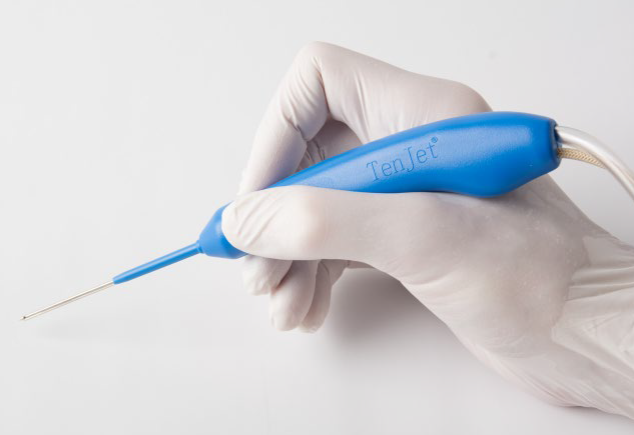What is a Tenotomy?
Tenotomy is a medical procedure designed to treat chronic pain caused by injury to tendons throughout the body such as micro-tearing, thickening, calcification and chronic overuse injuries. These injuries typically affect tendons in the foot, ankle, knee, hip, elbow, shoulder and Achilles tendon (located on the backside of the legs).
More specifically, tenotomy treats a wide range of conditions including:
• Epicondylitis – inflammation of the tendons that surround an elbow’s epicondyles, generally recognized as the bumpy bones on either side of the elbow (the ends of the humerus bone)
• Golfer’s or Tennis Elbow
• Tendonitis – inflammation of tendons that can affect many parts of the body
• Plantar Fasciitis – a painful disorder affecting the connective tissue (plantar fascia) supporting the arch of the foot
How is a Tenotomy performed?
Once the extent of the injury has been confirmed by either ultrasound of MRI imaging and conservative measures have been exhausted, a tenotomy may be recommended. There are several medical devices that can be used to perform a tenotomy. At Azalea Orthopedics, Dr. Jon-Michael Cline, Primary Care Sports Medicine Physician, utilizes TenJet technology to perform this procedure.
The TenJet system consists of a small hand-held device that includes a 12-gauge needle (or probe) with a high-pressure tip that dispenses a controlled, high-intensity stream of saline. This saline is used to debride (cut away) and extract damaged tissue without causing damage to surrounding healthy tissue.
Tenotomy is performed in an outpatient setting and takes approximately 15 minutes to complete. Once the patient is prepped, the doctor will administer a local anesthesia around the entry site. A very small incision will then be made that allows the doctor to insert the probe to the affected area. The insertion and procedure are performed using ultrasound guidance so that the provider can see exactly where the probe needs to be placed during the tenotomy and how to direct the saline. They will also use this imaging to determine when the damaged tissue has been completely removed. Because the incision is very small, it can be easily closed using Derma-bond, bandages or steri-strips – stitches are not necessary.
Risks and recovery
There are few risks associated with a tenotomy aside from possible cramping or the development of scar tissue. Most patients experience a mild amount of pain. In terms of recovery, patients will be seen at a follow-up appointment approximately two weeks following the procedure. At this appointment, the doctor may refer the patient to Physical Therapy for further rehabilitation and instruct on pain management (if needed) and limitations such as lifting. Most patients are back to doing their regular activities in about six to eight weeks following the procedure.
Watch Dr. Jon-Michael Cline’s video about the TenJet procedure.
Click here to learn more about the TenJet technology
The photo used on this page is courtesy of Hydrocision, 2024.





